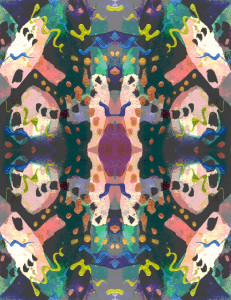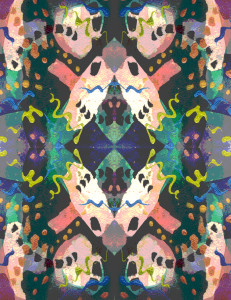Orthographic Drawings, the typical plan, section and elevations used in drafting also have a lot of potential in the design process. Often, a designer will work back and forth between these drawings to develop a design, as they inform each other. A 3d ‘paraline’ type of drawing is often employed to visualize and test the design that results. The ability to think this way and to employ these types of drawings is a part of any designer’s ‘toolkit’. Actually, it’s fun to play with these drawings after a basic level of skill is acquired.
Year: 2015
Orthographic Plan, Elev & 3d Paralines (2 of 3) Jul 22 2015
Login to view this content or Join us and Register.
Please note: Some video tutorials are exclusive to students currently enrolled in courses at Emily Carr. If you are already logged in but you cannot access this content, if may be because you do not have the required membership level. Please contact Tony if you are interested in a course.
Orthographic Plan, Elev & 3d Paralines (3 of 3) Jul 22 2015 (click video)
Login to view this content or Join us and Register.
Please note: Some video tutorials are exclusive to students currently enrolled in courses at Emily Carr. If you are already logged in but you cannot access this content, if may be because you do not have the required membership level. Please contact Tony if you are interested in a course.
MASS DRAWING – Architecture – Al Arab, MOMA, Falling Water { Jul 15 2015} click video
Login to view this content or Join us and Register.
Please note: Some video tutorials are exclusive to students currently enrolled in courses at Emily Carr. If you are already logged in but you cannot access this content, if may be because you do not have the required membership level. Please contact Tony if you are interested in a course.
GESTURE DRAWING- Architecture – La Sagrada Familia {Jul 15 2015} click video
Login to view this content or Join us and Register.
Please note: Some video tutorials are exclusive to students currently enrolled in courses at Emily Carr. If you are already logged in but you cannot access this content, if may be because you do not have the required membership level. Please contact Tony if you are interested in a course.
MAGIC CARPETS (No video yet)
I like to combine PShop and traditional mediums. In this case I did a very small, 5 inch, watercolour with acrylic ink mark-making on paper. I used my ‘tonal design ‘method. I scanned and used PShop to mirror, flip and repeat to get several designs. Beats the old fold-the-paper-in-half-and-press technique. Here is the 5″ 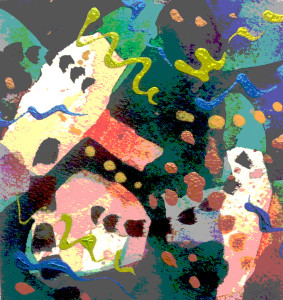 original with the mirrored results below.
original with the mirrored results below.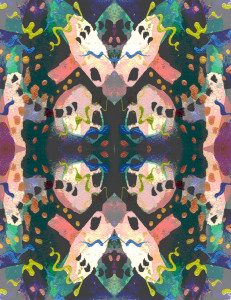
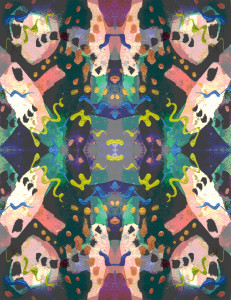
SPACE-HEAD “THE MAN WHO WASN’T THERE”…MASTERS THESIS
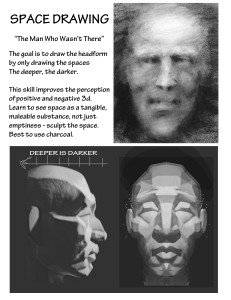 Earlier this year, RL thought of developing the “space-head” exercise from my class for use in her Masters Thesis in Education. I wondered how she made out: On Sun, 07 Jun 2015 20:00:03 -0700, RL wrote: “Hi Tony, How nice to hear from you! All aspects of my thesis were well received, but none more so than the video of the “space-head” you helped me to create. The iMovie/self-portrait I made was suggestive, just as you say, of the process of emergence – in all its ambiguity and uncertainty – that I experience in my professional life as an educator and that was very much a part of my thesis work. I’m very grateful for the opportunity I had to work with you and all that I learned about drawing and about myself as a result. … Looking forward to seeing you in July at the Shadbolt.” RL
Earlier this year, RL thought of developing the “space-head” exercise from my class for use in her Masters Thesis in Education. I wondered how she made out: On Sun, 07 Jun 2015 20:00:03 -0700, RL wrote: “Hi Tony, How nice to hear from you! All aspects of my thesis were well received, but none more so than the video of the “space-head” you helped me to create. The iMovie/self-portrait I made was suggestive, just as you say, of the process of emergence – in all its ambiguity and uncertainty – that I experience in my professional life as an educator and that was very much a part of my thesis work. I’m very grateful for the opportunity I had to work with you and all that I learned about drawing and about myself as a result. … Looking forward to seeing you in July at the Shadbolt.” RL
Here is where the title expression came from:
“Antigonish” is an 1899 poem by American educator and poet Hughes Mearns. Check it and him out in Wiki. It is also known as “The Little Man Who Wasn’t There“, It is a very ambiguous, existential, ghostly and suggestive phrase that has been used to inspire plays, lines in movies, a hit song, novels and lately a Coen Bros. movie. It also seemed to fit with an exercise that I use in my classes in drawing. Here we try to draw a head – without actually directly drawing the head, by working as if is a form under water and drawing the water instead of the form, thus revealing the face through many small ‘encounters’. I call it a ‘space drawing’, or ‘space-head’ because we try to draw the space and thus reveal the head-form. Sounds strange, but it builds the ability to see space as an actual, tangible substance, just as important as form. (Here I refer to 3D sculptural/architectural space- counterpart of form, not the 2D space of negative flat shapes.)
CDA Day 5 Of 8 SPACE-HEAD 1 of 3 (feb 28 2015) click vid title
Login to view this content or Join us and Register.
Please note: Some video tutorials are exclusive to students currently enrolled in courses at Emily Carr. If you are already logged in but you cannot access this content, if may be because you do not have the required membership level. Please contact Tony if you are interested in a course.
